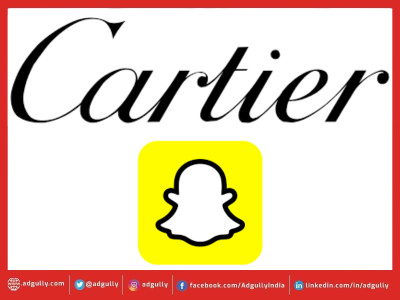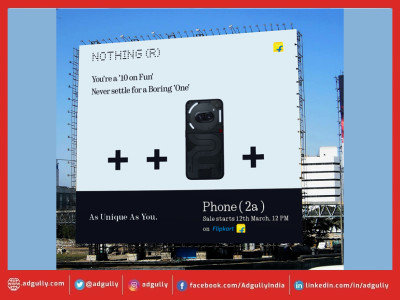Guest Column: Conversational Commerce - Fad or Future of e-business?
Ishan Chatterjee, Client Solutions Director, VML South East Asia & India, decodes the world of Conversational Commerce – its evolution, implementation, how it is transforming businesses as we know it and what brands need to take into account for it to really work.
In today’s digitally connected environment, the traditional 9-to-5 workday has pretty much become a thing of the past. Studies show that work hours are creeping longer, with organisations adopting flexible working and employees taking their work home. While this has certainly been a hot topic of discussion, we are also seeing more examples of how people are bringing their own habits and experiences from home into the workplace, making the advent of consumer experience hugely influential in a business context.
According to Adobe Digital Index’s Digital Trends Report 2015, the use of IoT devices has increased drastically, partly brought on by the introduction of devices like Amazon’s Echo, Google Home, and home-monitoring devices like Nest. The report also found that 51 per cent of smartphone owners are already interacting with home IoT devices, and have mostly positive views of the technology - based on sentiments expressed on social media.
Conversational Commerce started with the very same insight; how can we use technologies that consumers are already accustomed to using messaging applications, natural language search and merge them with artificial intelligence to surprise and delight consumers in their brand experiences.
This type of commerce is a natural evolution of our market as consumers become increasingly used to conversational interactions. Texting, messaging, and calling continue to be daily modes of interactions, but consumers are yearning for more convenient and contextual experiences. Mobile digital assistants, for instance, have grown to be a popular engagement tool, with approximately $2 billion in online sales projected to be performed exclusively through mobile digital assistants by the end of 2016, according to research firm Gartner.
Another example of conversational commerce in action is in the way we buy things; customers are able to issue payments without leaving the conversation – or more broadly, the mobile device. According to the latest proximity mobile payments forecast from eMarketer, the total value of mobile payment transactions in the US will grow 210 per cent in 2016, a clear indication that the days of traditional search and navigation are rapidly changing.
On the flip side, implementing a conversational commerce strategy is easier said than done. At a time when most brands and e-tailers are still refining and optimising the mobile experiences for their websites (does anyone remember Indian e-commerce giant Flipkart’s app-only experiment which flopped?), they will have to face the added struggle of offering an effective conversational experience directly to their consumers across all digital touchpoints.
So, with Conversational Commerce transforming businesses as we know it, what are some of the considerations brands need to take into account, for it to really work?
Be where the consumer is
Today, 4 out of the 5 most used social networks are messenger platforms. Users are attracted to these platforms because they feel more personal, convenient, and have a user friendly interface.
This convenience, personalisation and authenticity is also why these apps are becoming go-to channels for interactions with brands, when it comes to e-business or e-commerce. Consumers are no longer satisfied with writing emails, or waiting 3-5 business days for a response. They want an immediate response when sourcing for information around the products or services they are browsing.
KLM Royal Dutch Airlines is one of the benchmarks of a brand that has figured this out perfectly, unveiling a month ago, an option that allows passengers to book flights and get updates about flight schedules through Facebook Messenger. Earlier this year, KLM trialled a re-booking service for passengers flying through Amsterdam’s Schiphol Airport, who were affected by weather delays, through WhatsApp. The key advantage of this offering was that travellers no longer had to wait again in the queues after a delayed flight.
The hospitality industry has also hopped on the messenger bandwagon in droves, with Starwood Hotels offering a WhatsApp service for guests to make requests during their stay at the high-end St Regis hotels and Marriot International launching an “Anything Else?” service through its branded mobile app, which connects the guest directly with a staff member, bypassing the phone or a visit at the front desk.
In announcing the service, Matthew Carroll, Vice President, Marriott Hotels emphasised the brand’s focus on the digital guest experience:
“Some 75 per cent of people travel with one or more mobile devices and the percentage is higher for younger travelers. We know today’s travelers want a mobile experience built around their changing needs and desire to communicate on their terms. Mobile Request is the brand’s next evolution since our introduction of mobile check-in, checkout and room ready alerts worldwide.”
Evolve quickly or grow obsolete
Payments have always been integral to any e-commerce transaction, and conversational commerce is revolutionising the way they are made. We witnessed in the West, Snapchat’s introduction of Snapcash in 2014, and Facebook’s move months later with its free Messenger Payments feature. Closer to home, in Asia, WeChatPay has been a dramatic game-changer for the messenger platform WeChat – driving nearly RMB 300 million in bank transfer fees and over 200 million credit cards stored on file.
These platforms are perfect indicators of a future where conversational commerce is a norm. Compared to traditional channels, these apps offer immense convenience; allowing consumers to make payments without having to switch channels, from the comfort of their homes or offices, instantaneously and with a documented record of transactions made.
In the race to make online payments easier and more streamlined for users, it will not be too long before we see app developers roll out even more payment options through chat and messaging apps – a foreseeable standard fare in e-commerce.
Cut through the clutter
Originally, chat apps and messenger platforms were meant to be the bastion of peer-to-peer communications, safe from any form of interaction with brands. Today, however, this is no longer the case. The ubiquity of messaging applications has given rise to marketers vying to cut through the clutter and create user-led conservations. Examples range from Atlantic Media’s Quartz, which released an application that presents news in a messenger style format, as if they were being sent by a friend, Snapchat’s Discovery feature, and Guardian’s Chatbot on Facebook.
While these brands are still using messaging platforms to broadcast, or disseminate information, there exists an untapped opportunity to convert this engagement into a monetisation platform. Unlike social media, where users are bombarded with too much information, content through chat and messaging apps are focused and personalised, creating a much stronger link between the brand and consumer.
In an increasingly competitive app market, conversational commerce will continue an upward trend, and e-commerce companies need to adapt to maximise the potential of their business – be it making interactions more personal and meaningful, or more convenient by allowing consumers to make payments in just a few taps. After all, it is already transforming customer journeys as we know it, and there is no doubt it will have a major impact on e-commerce in the years to come.



















Share
Facebook
YouTube
Tweet
Twitter
LinkedIn